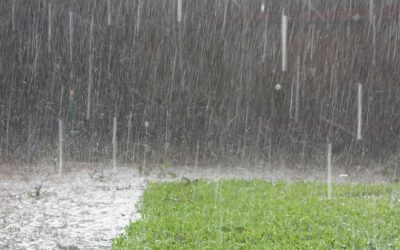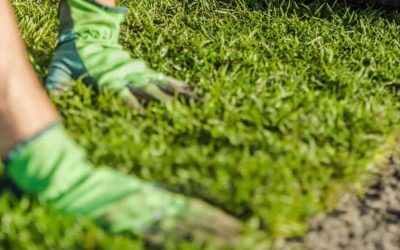How to Grow Buffalo Grass in Australia
Quick Links
Growing Buffalo Grass In Australia
DNA Certified Sir Walter Buffalo Grass, Australia’s favourite lawn variety, is a vibrant green grass with soft leaf blades and high drought tolerance.
Luckily, as buffalo grasses, like Sir Walter Buffalo Grass, are native to Australia, they are well suited to the environment and grow well in the heat of Summer as well as the frosty Winter.
Find out how to grow buffalo grass in your front or back yard.
Growing Buffalo Grass
When it comes to growing a new lawn, good preparation goes a long way.
Ensuring the soil and area is well prepared will give you the best outcome on the installation day.
Once your buffalo lawn is fully established, you’ll be rewarded for all your effort with a low maintenance lawn with good tolerance to weeds, shade, drought and more.
How Long Does It Take To Grow Buffalo Grass?
When your new DNA Certified Sir Walter Buffalo turf arrives at your doorstep, it will already be partially grown.
That’s one of the key benefits of choosing turf rather than buffalo grass seed.
Depending on the season, your new lawn should be established 4 weeks after laying turf.
New lawns will require regular fertilising and watering to ensure they have the ideal conditions to fully establish in your yard.
How To Prepare Your Soil For Buffalo Grass
Preparation is key when installing a new lawn. You need to make sure that the soil isn’t compact and is nutrient-rich.
Like most lawn varieties, DNA Certified Sir Walter buffalo lawn prefers a soil pH level between 6 and 7.
Depending on your existing soil, you may need to add additional soil to make sure your lawn will be the right height and the grass root will establish.
You should level your soil to be 40mm lower than your desired lawn height.
Finally, once the soil is the right composition, rake it so it is level and ready for the new turf.
How To Grow Buffalo Grass Quickly
Buffalo lawns are naturally quick growing so, with the right lawn care, you can be sure it will thrive.
For quick growth, make sure to fertiliser quarterly (if your lawn is already established), or every 8 weeks for newly laid buffalo turf.
Always water the fertiliser in thorough, and, especially in Spring and Summer, you’ll find your new lawn grows quickly.
Of course factors, such as the amount of direct sunlight as well as foot traffic it receives, will impact it’s growth.
How To Get Buffalo Grass To Spread & Fill Patches
From time to time, you might find there are bare patches in your lawn.
Often this is caused by high traffic in specific areas, or by dog urine.
You can fill dead patches by adding new turf and helping that to establish, or by adding topsoil and encouraging your existing lawn to fill the area.
To get your grass to spread and fix bare patches, don’t forget to pair this with regular fertilising and to address the reason the dead patch appeared in the first place.
How To Grow Buffalo Grass From Runners
Another way to repair bare patches is by using buffalo grass runners.
However, this is not recommended for an entire lawn as it would not only take too long but won’t necessarily grow evenly.
Similar to growing buffalo grass from plugs, you will need to individually plant the runners into the soil.
This process will be cheaper but it will take multiple months for the grass to establish and grow.
Growing Buffalo Grass Year Round
As with most warm-season grasses, buffalo lawn will grow best in Spring and Summer.
During these seasons, you will need to start mowing more often, but your lawn will thrive.
With the right growing conditions, your soft leaf buffalo grass will also continue to grow throughout Autumn as well.
Winter
While your Sir Walter Buffalo lawn won’t actively grow in Winter, it is known for its ability to maintain its green colour throughout most of Winter.

Like most warm season grass varieties, buffalo grass goes into hibernation over winter.
During this time, it won’t need mowing but will be more susceptible to weeds.
To help your buffalo lawn through Winter, it is best to fertilise in Autumn, hand remove any weeds that appear and avoid walking over the frosted lawn where possible.
Spring
Once Spring arrives, your buffalo grass will spring back from its hibernation.
You’ll need to start lawn care practices such as doing a pH test, aerating, adding topsoil or dethatching where needed and applying fertiliser.
You’ll also find that you need to mow more frequently in Spring as Sir Walter DNA Certified grass is a quick grower.
The optimum grass height for Sir Walter is 20 – 25mm, but remember to follow the rule of thirds when mowing!
With more sun and warmer weather, you need to make sure that your lawn is getting enough water.
If it hasn’t rained recently, or you have particularly toasty weather, don’t forget to get the hose out!
Summer
Summer continues the peak growing period for your buffalo grass.
Buffalo varieties are naturally drought-resistant, but to ensure this is the case you want to encourage deep root growth with long, infrequent watering.
By doing this, roots will grow deeper in search of water underground and your lawn will be prepared for water restrictions and hot weather.

Summer is another good opportunity for you to fertilise your lawn.
However, as it is much warmer, try to water the fertiliser in as quickly as possible to avoid it burning your grass.
If your lawn is already looking a bit worse for wear from the summer heat, a good choice of fertiliser is ColourGuard PLUS.
This will not only fertilise your lawn but add colourant for an instantly greener lawn.
Autumn
With Summer out of the way, your buffalo grass will start to grow slower. While this means less mowing, it also means you have a short few months to prepare for Winter.
As good Winter care relies on preparation, now is the time to think about a final, slow-release fertiliser that will carry your lawn through the cooler months.
You can also preemptively control invasive weeds with Oxafert. This pre-emergent herbicide won’t allow weed seeds to germinate.
This is especially useful for tackling Winter Grass and other persistent annual weeds.

read more!
recent posts
How To Recover A Lawn After Flooding
Get expert tips on draining excess water, removing debris, proper mowing, fertilization, and post-recovery care to ensure a lush, green lawn
Recent Floods – Our Turf is Unaffected!
While recent floods have impacted many, our turf remains pristine and unaffected. Order today to guarantee the best for your garden!
Turf Sizes and Turf Rolls
The size of turf refers to the dimensions of the individual rolls or pieces of grass that make up your new lawn.
Soft Leaf Buffalo Grass
Find out why soft-leaf buffalo grass is such a popular lawn choice in Australia, the number 1 buffalo grass choice and how to look after a new soft-leaf buffalo lawn.

Our Turf
TifTuf Bermuda
Buy Turf Online © 2019 All Rights Reserved. | Proudly Designed and Developed by Sydney ICT




